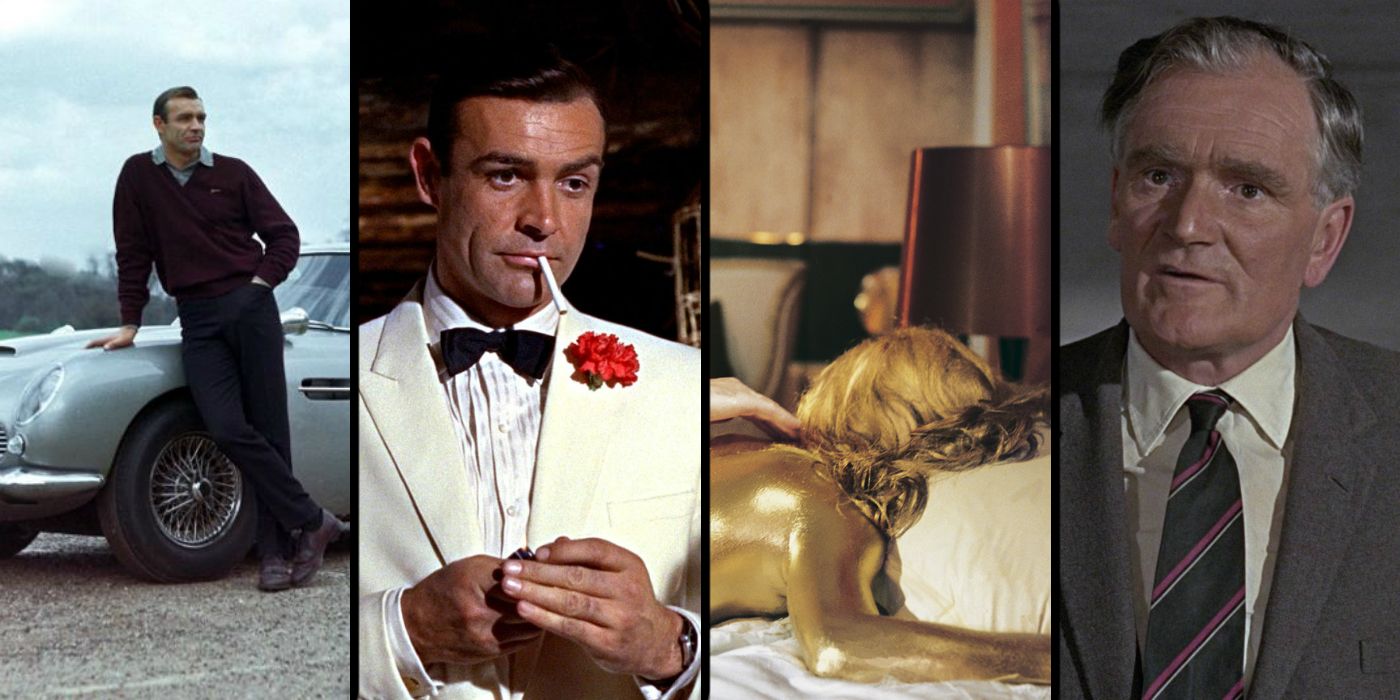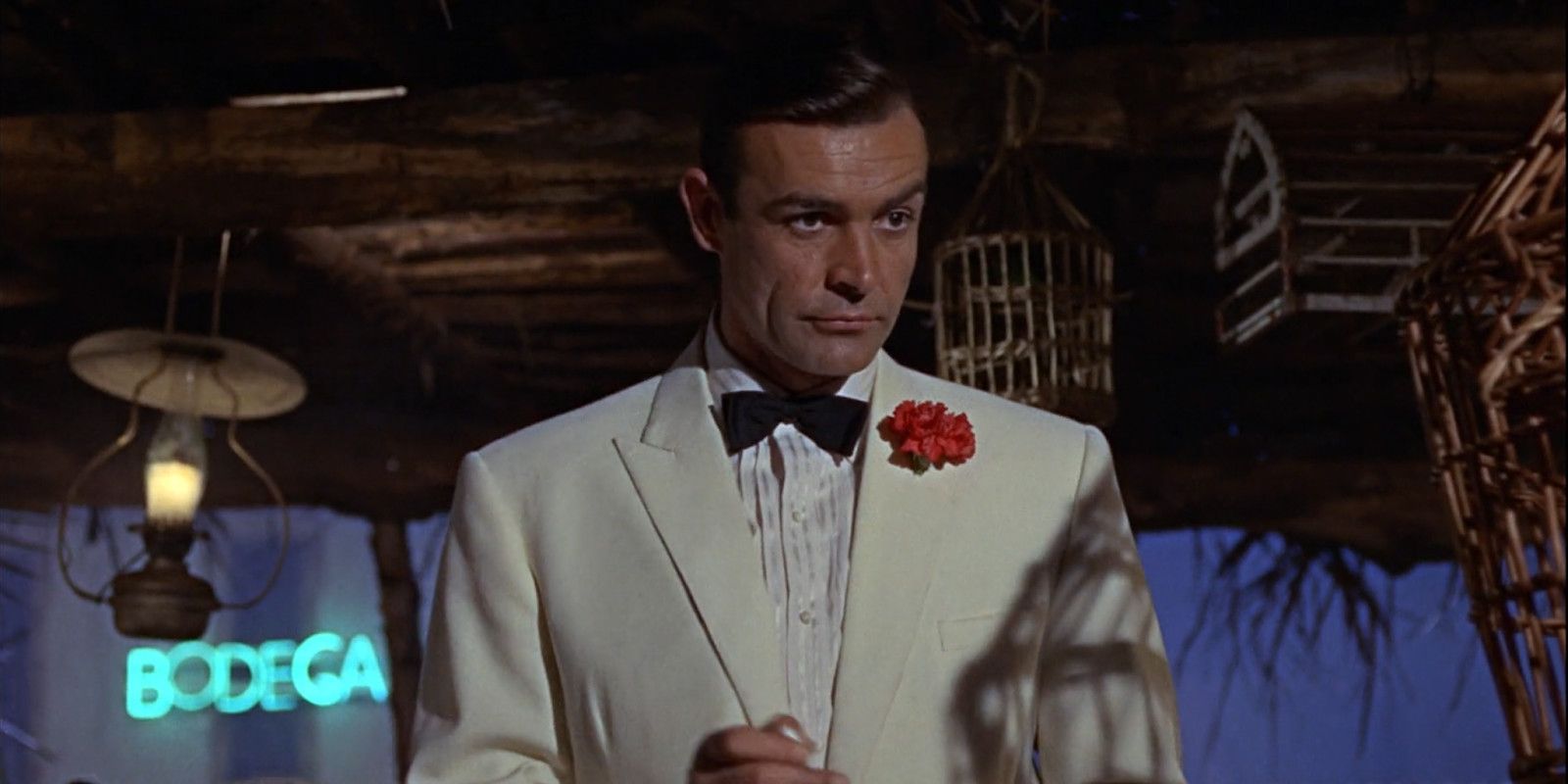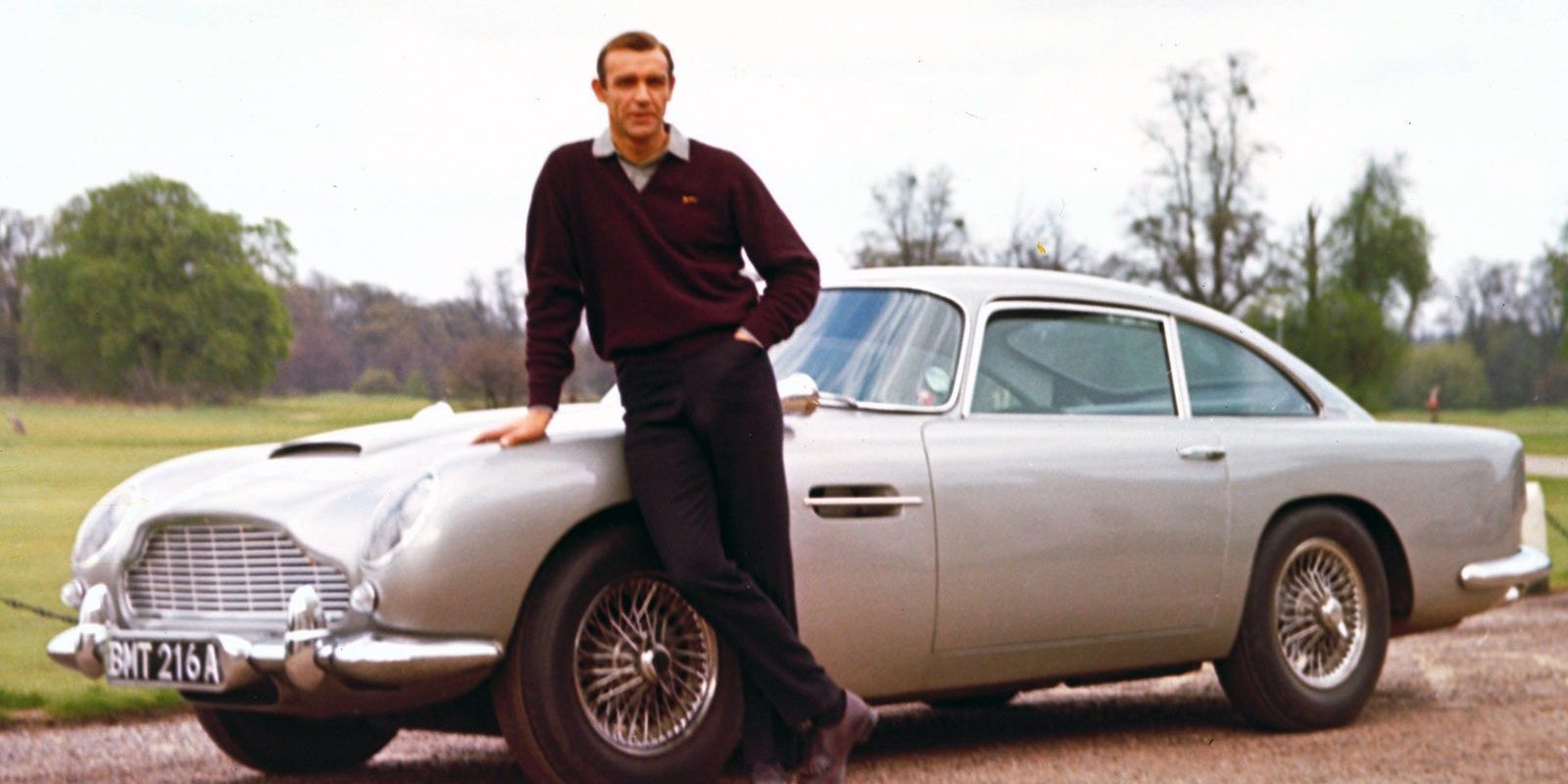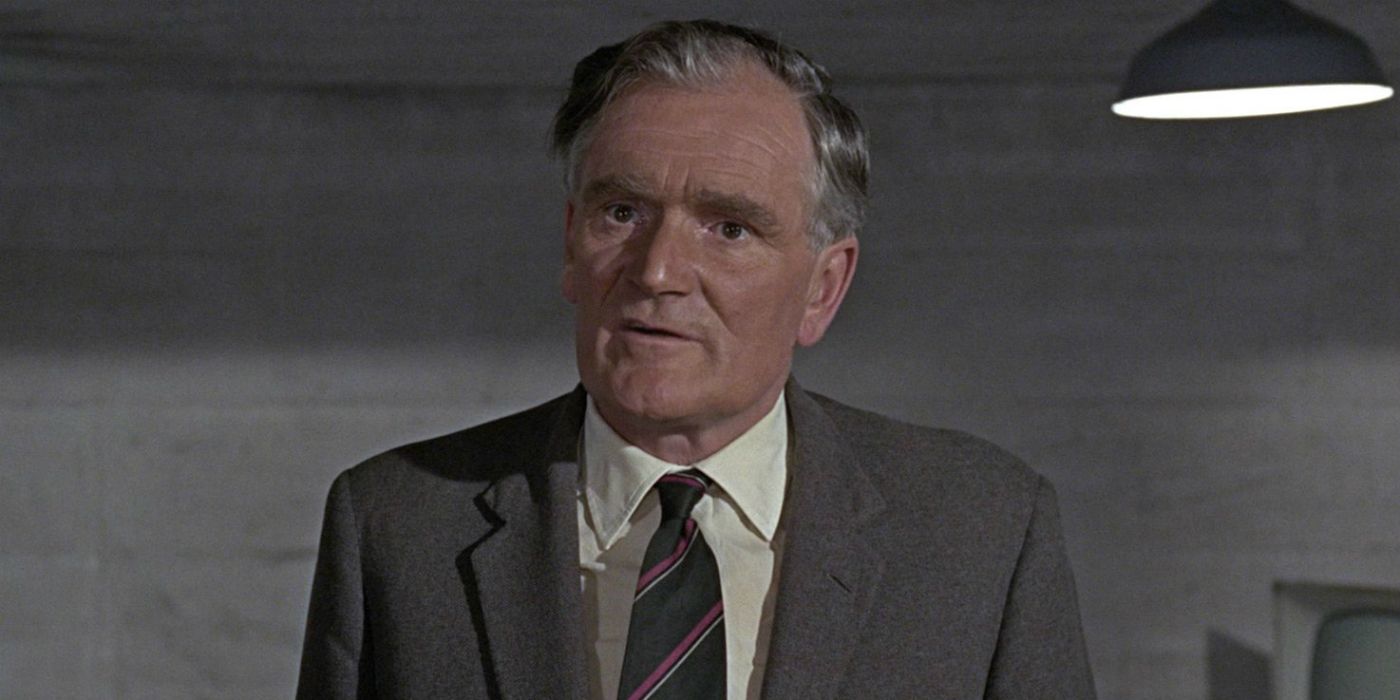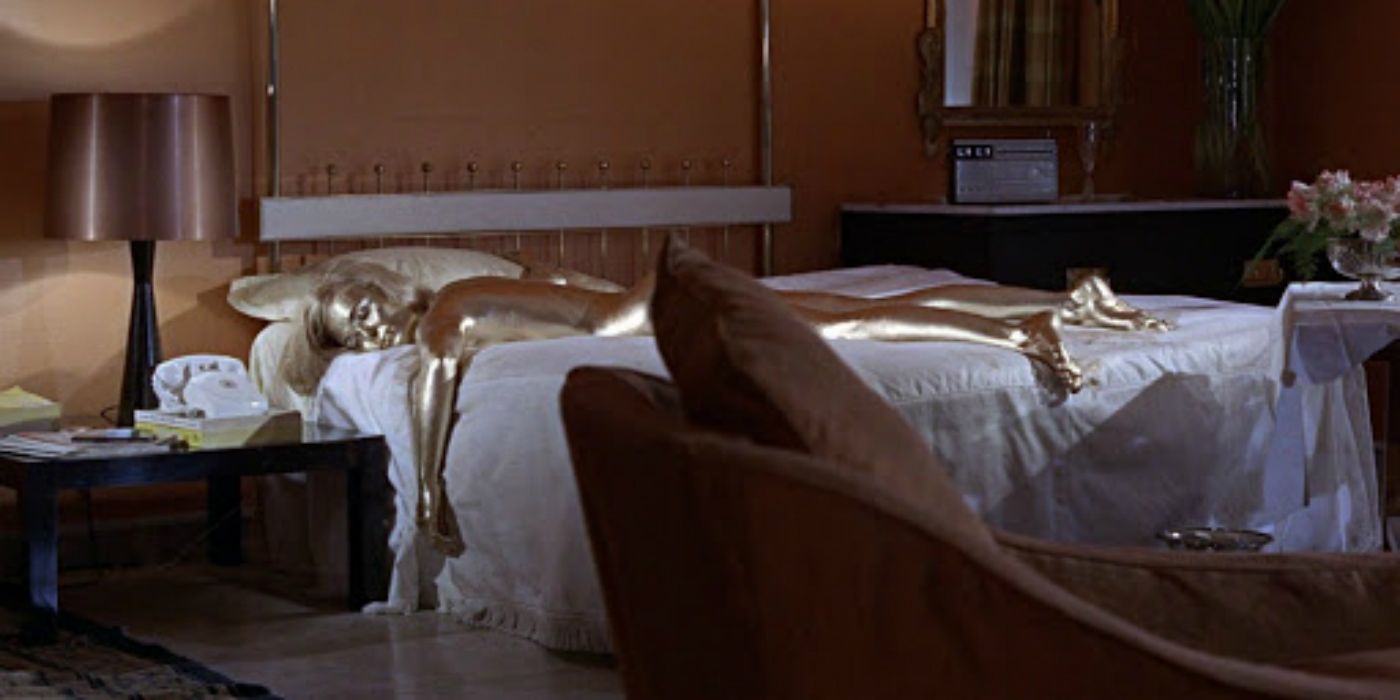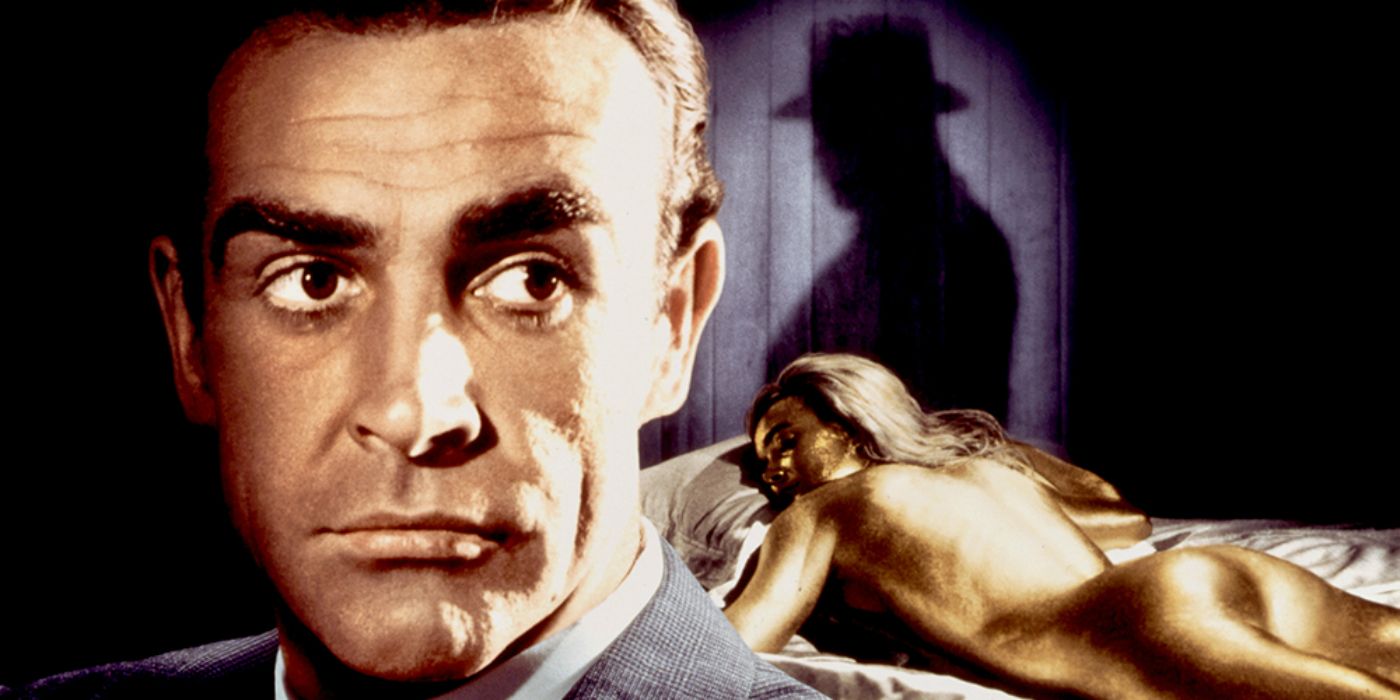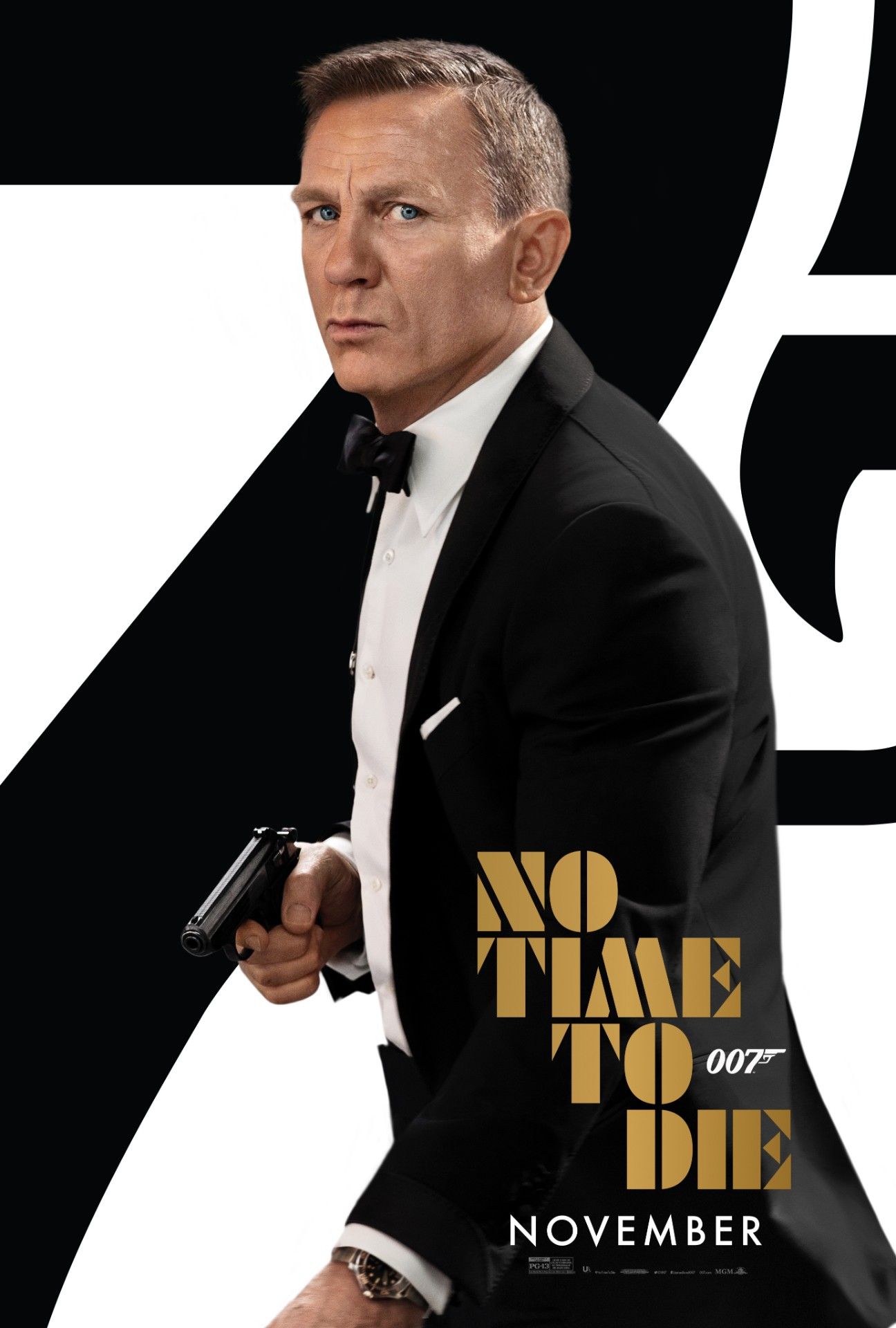Goldfinger is one of the most acclaimed James Bond movies, and also the most important, introducing a number of elements that have becomes staples of the franchise ever since. Star Sean Connery returned for his third outing along with producers Albert R Broccoli and Harry Saltzman, who based the film on Ian Fleming’s seventh Bond novel, which centred on gold smuggling and theft led by the suspicious Auric Goldfinger. While it initially could have evolved into a standard sequel, Broccoli and Saltzman were boldly prepared to up the ante and make the biggest Bond film yet, mustering a $3 million budget that paid off in more ways than one.
Beyond its record-breaking $125 million gross, Goldfinger’s culmination of action, glamour, scope, and suspense revised the audience’s notions of what Bond, and action films overall, could really amount to. Although previous films Dr No and From Russia With Love each set iconic standards for the series, Goldfinger truly cemented Bond’s reputation and resonance in several ways. Naturally, its legacy was apparent immediately; from Thunderball onwards, every subsequent James Bond film has either subtlety or blatantly incorporated the Goldfinger template, with varying levels of success.
Thanks to this overexposure, most audiences may take Goldfinger’s attributes for granted, but its imagination and innovation should never be disregarded. Upon scrutiny, it’s in fact easy to recognise the film’s originality and cleverness, and why exactly its hallmarks became classic Bond clichés in the first place.
Goldfinger Solidified The Bond Pre-Credits Scene
From its opening seconds, Goldfinger evolved a famous Bond trait. Whereas Dr No jumped straight in to its classic title sequence, and From Russia With Love included a short teaser for its main villain, Goldfinger took the final step to establish a famous pre-credits scene that every Bond film since has produced a variation of.
Director Guy Hamilton designed the piece as a light-hearted “wonderful bit of nonsense”. In it, a scuba-clad Bond emerges from a river (disguised by a tactfully-placed mock-duck), plants a bomb, changes into his trademark tuxedo, charms a lady, and outwits a henchman before delivering an electric pun as he casually exits the frame. The scene has nothing to do with Goldfinger’s overall plot, but proved to be a concise encapsulation of Bond’s character and a perfect introduction for international audiences unfamiliar with the movies.
Its self-contained nature and balance of action and humour was on point; these elements were designed by Hamilton to not only tease the audience of what a Bond film entailed, but also to boldly invite them along for the ride. George Lucas and Steven Spielberg used a similar approach for the opening scenes of the Indiana Jones films, and it can be seen in countless action movies today. If only Sean Connery had been included in the film’s gun-barrel sequence, then Goldfinger truly would have perfected the Bond pre-credits scene.
Goldfinger Was The First Entry To Have Bond Drive An Aston Martin
“Where’s my Bentley?” Bond asks early in the film. Q explains it away with a modified Aston Martin DB5, featuring a vast array of weapons and gadgets, and Bond has never looked back since. Although he has driven various models of various brands throughout the decades, Goldfinger began Bond’s distinguished association with Aston Martin, who even allowed the filmmakers to use the DB5 prototype in the movie. From this, the name of Aston Martin reached a point where it became forever interlinked with James Bond, just as much as the Walther PPK or the vodka martini.
It’s a perfect pairing that has only grown more prevalent in recent years. On top of On Her Majesty’s Secret Service and The Living Daylights, an Aston Martin has appeared in every Pierce Brosnan and Daniel Craig instalment. The brand even designed the luxurious DB10 specifically for Craig’s fourth film, Spectre, further cementing their close partnership with the Bond franchise. But despite innovations in Aston Martin’s designs, it naturally always comes back around to Goldfinger’s classic DB5 – the aptly named “most famous car in the world”. The iconic car continues to cameo in the movies as Bond’s ‘off-duty’ vehicle, and even retains its original gadgets in the Craig films — not limited to the rear bulletproof screen, front wing machine guns, and of course, the famous ejector seat.
Q Branch And The Gadgets Are Properly Introduced
In From Russia With Love, Desmond Llewelyn played a relatively non-descript character named Major Boothroyd, whose sole purpose was to deliver expository dialogue early in the film regarding a special attaché case that Bond could weaponize. This character and his purpose were retained for Goldfinger, but he was wisely elaborated and improved on to ultimately become the fan favourite, Q. Rather than just a briefcase this time around, Q supplied Bond with some toys that would prove to be conveniently useful later on, including the DB5 and two homing devices vital for Bond’s safety.
The Q Branch laboratory immediately became an advantageous location to show off each film’s new assortment of high-tech gadgets; they typically ranged from ingenious to gimmicky, but were always fun and imaginative in their own ways. As time went on, Bond’s arsenal of gadgets progressed (or regressed) to x-ray glasses and the infamous invisible car. Reliance on gadgets was fairly toned down after that. In terms of character, Goldfinger introduced Q’s annoyance at Bond’s flippancy, which established a popular comedic dynamic between the two that remains to this day. Bond’s tendency to lose Q’s attention and trash Q Branch’s gadgets became a reliable source of comedy for the future, rarely failing to be a highlight of most subsequent films.
A Murdered Bond Girl And A “Supervillain” Henchman
Goldfinger solidified character archetypes and plot points that are now well represented across the James Bond movies. Jill Masterson’s iconic but disturbing murder at the hands of a deadly villain has since seen numerous variations, but these scenes are always successful at driving up the audience’s animosity and intimidation for Bond’s antagonists, and sometimes act as a motivating force for Bond to take revenge (in Goldfinger, M even warns Bond against undertaking a vendetta). In later films, the grim murders of Tracy Bond, Plenty O’ Toole, and Strawberry Fields all clearly take cues from Masterson’s demise, and Bond’s downbeat response to each death nicely indicates the character’s rarely seen sympathetic side.
On the subject of Bond girls, the late Honor Blackman’s skills in Judo gave her character Pussy Galore a feisty edge that even managed to catch Bond off guard; she turned out to be a forerunner for later Bond heroines. Although Gert Frobe’s Goldfinger rightfully owns the show, the introduction of Oddjob - Goldfinger’s right-hand man - established the welcome addition of some quirky action in the Bond movies. From Russia With Love’s Red Grant provided a good-enough fight for 007, but Oddjob and his hat-throwing gimmick really captured the fans’ imaginations, and set a new standard in action films to make henchman more special and less disposable. Following in Oddjob’s footsteps came the memorable Jaws, Nick Nack, Baron Mendi, May Day, and Mr Hinx - all of whom livened up James Bond’s villainous palette.
Everything Else Introduced In Goldfinger
After the stirring pre-credits scene, Goldfinger further innovated its opening with a new kind of title sequence, the Bond theme song. Unless you count a brief sample of Byron Lee’s ‘Kingston Calypso’ in Dr No, Goldfinger’s titles were the first to incorporate lyrics, one-upping From Russia With Love’s instrumental version of the Matt Monro song. Additionally, the lyrics of the Shirley Bassey tune, written by Leslie Bricusse and Anthony Newley, perfectly married the sequence’s gold motifs in a way not seen in cinema before. It was an inspired, striking, and glamorous sequence that provided a mutually complementary display of sound and vision, to be replicated over and over again in the series. Even when title sequences are currently dwindling in big-budget cinema, the modern Bond films are able to retain their imaginative credits at the start, rather than at the end of the film thanks in part to Goldfinger’s legacy.
The film’s status as a lynchpin is especially evident from the series’ multiple paradigm shifts. The movie’s financial and critical triumphs gave Saltzman and Broccoli a model for success that they constantly resorted to in the years afterwards, particularly in times of desperation with James Bond movies. Diamonds Are Forever, The Spy Who Loved Me, Licence To Kill, and Goldeneye all take a leaf from Goldfinger’s book, from retaining Guy Hamilton to referencing the theme song. Although sporadically successful at this, Goldfinger still bests them all at a lot.
Of course, it continues to top fan polls and remains endlessly quotable and iconic. As the film’s influence continues to be evident in the James Bond series and elsewhere, being endlessly referenced, imitated and parodied in a variety of mediums, it’s little surprise that the appeal and popularity of Goldfinger remains intriguing and inviting as it did upon its release almost 60 years ago.

